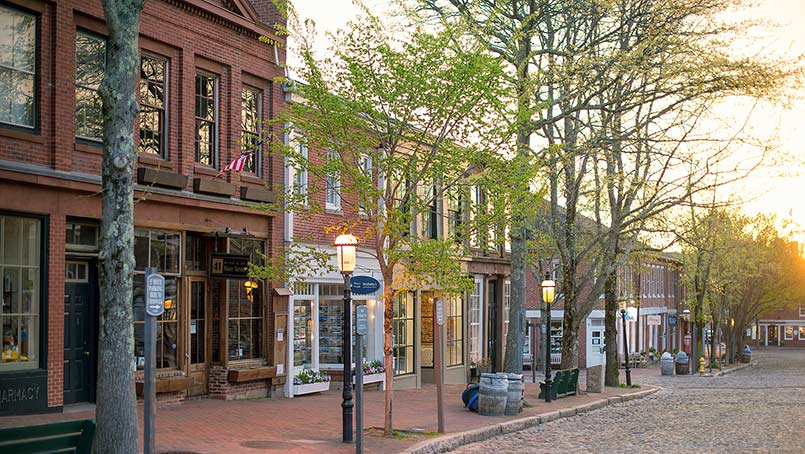
24 Jul 2019 Gut Fish, Not Houses: The Challenges of Being Historic Nantucket
Historic Boston’s executive director Kathy Kottaridis traveled to Nantucket this month to speak to the Nantucket Preservation Trust, an organization devoted to preservation of the island’s unique assembly of historic architecture. As she discovered, to be the special place it is, Nantucket is balancing an array of severe economic, environmental and social pressures, and preservation is being called upon to mitigate the impact of those changes.
For decades, year-round and seasonal residents have been working on the thing they collectively desire most for the island: keeping Nantucket Nantucket. The entire island is a National Historic Landmark. Large swaths of land have conservation restrictions. And initiatives like ReMain Ventures, led by Wendy Schmidt, wife of Google impresario Eric Schmidt, are working to buy and control commercial properties and businesses in an effort to preserve long time and locally-grown enterprises.

To complicate matters, climate change is making clear that Nantucket must be ready for more destructive storms and rising sea levels. Already, some property owners in the core of downtown have raised up their historic houses to protect them from expected flooding. While Nantucket looks ahead to the impacts of climate, it is already building buffers on the northern beaches of the island where for years, the sea has been gradually but systematically eating away at the bluffs and threatening historic homes that line the water’s edge.
And the threats to Nantucket are more than Mother Nature. The natural beauty and historic architecture of Nantucket island are its most attractive qualities, and yet it is these strengths that have made it one of the most expensive places to live and work, creating considerable economic imbalance among the island’s residents. In the first quarter of 2018, the average sales price of a house on Nantucket was $2.3 million, and many business operations like the airport, the ferries, hotels and restaurants import seasonal workers.
While the Town’s Historical Commission has oversight of the exteriors of the island’s many 18th and early 19th century cottages and houses, the Nantucket Preservation Trust is working on something a little more insidious: a trend among new property owners to destroy the historic interiors of these houses. Noting a systematic uptick in building permits that call for gutting and sleekly modernizing the interiors of small cottages, NPT has been purchasing and accepting donations of easements on the interiors of traditional Nantucket historic houses as a means of protecting their floor plans and original historic features.

NPT distributes bumper stickers that say “Gut Fish, Not Houses” to educate the public on potential loss of historic house interiors, but it is now looking at opportunities to do more, through direct real estate acquisitions, and by offering technical assistance to new property owners.
Change in all of our communities is inevitable, and yet the region’s real estate market and climate change are speeding up demand for public attention in small and special places like Nantucket Island where, perhaps, the responses and efforts to manage change will be an example to us all.



